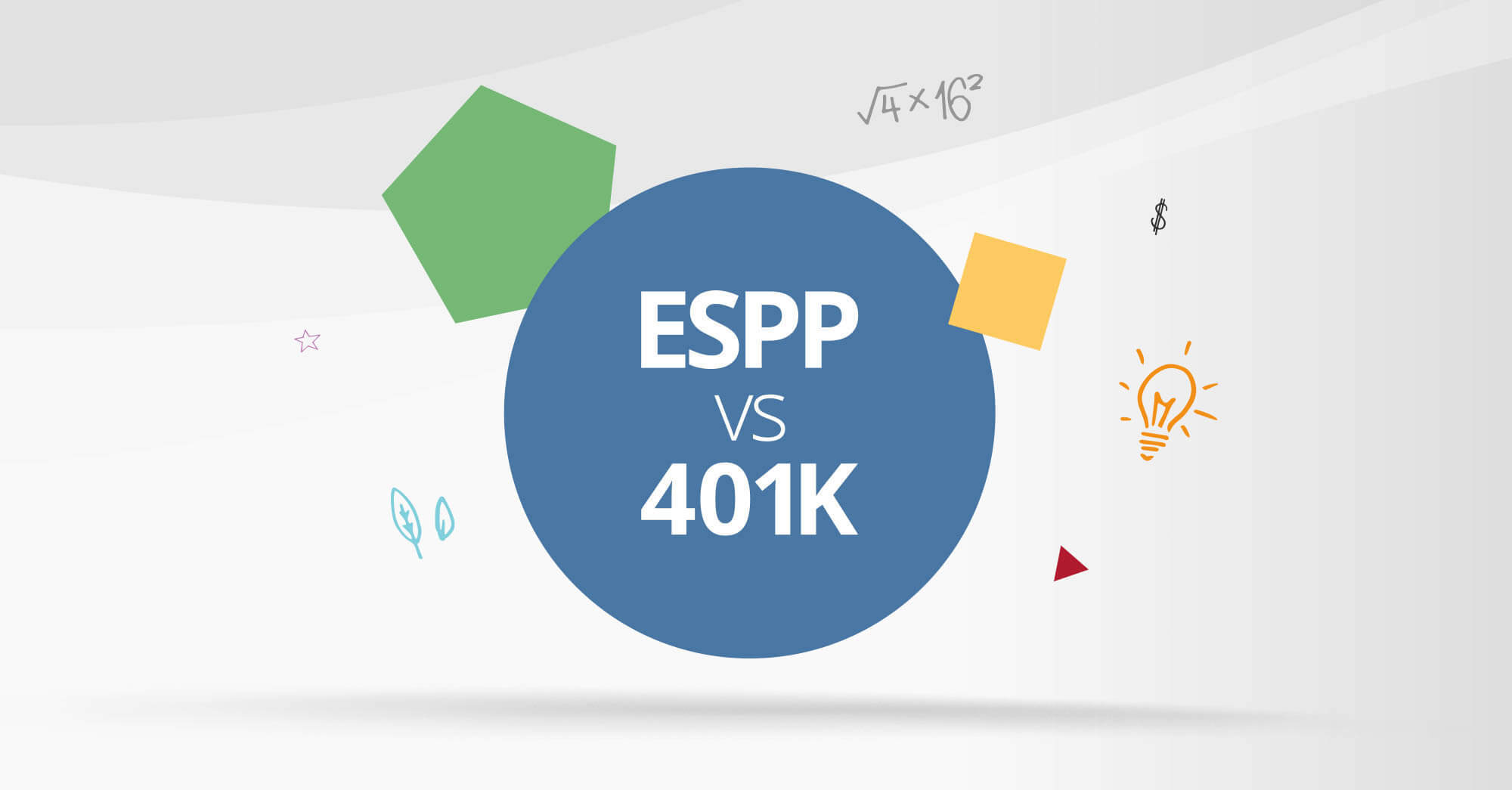Investing in your future is always a good idea. Whether you are an employer looking to improve your staffs’ benefits package by giving them a way to save directly from their pay checks or you’re an employee hoping to build a nest egg, you’ll want to be sure that you’re making the most of the options available to you. In the United States two such choices are ESPP (Employee Stock Purchase Plan) and 401(k), but depending on where you are in the world there might be other avenues available too.
Since financial products can be quite complicated it’s advantageous to be familiar with the terminology and have an idea of what each one does or doesn’t do before you get started.
ESPP or 401(k) – What are they?
An Employee Stock Purchase Plan (ESPP) is a popular choice among employers that allows their employees to purchase discounted company shares via payroll deductions. Around half of the companies traded on the S&P 500 offer this type of plan to their staff. Having an ESPP available has been shown to attract high quality staff and aids with retention, since it gives employees a vested interest in the performance of the business – the better the company does, the better they do.
In an ESPP shares are purchased at a reduced price, usually 15% of the market value on either the first or the last day of the offer period, which is normally six months. A further incentive for staff is that employers can choose to match the contribution level and, depending on the type of ESPP made available, either Qualified or Non-Qualified, there may be additional tax benefits. What’s more Employee Stock Purchase Plans are not just limited to executives but can be made available across all levels of an organization, so everyone can benefit. If you want to understand more about ESPPs, read our guide.
Named for the section of the tax code that established this type of plan in the United States a 401(k) is basically a savings and investment retirement plan. Deductions come directly from the employees payroll and are placed into an investment fund. Similar to the ESPP an employer has the option to match some or all of the employees contribution, up to certain limits. A 401(k) is in effect an employer-sponsored, defined-contribution, pension account. Similar to an ESPP, the funds invested are market linked, meaning returns are not guaranteed and values can rise as well as fall.
At a glance
ESPP
- Contributions deducted via payroll.
- Contributions are post-tax.
- Tax depends on if the plan is a Qualified or Non-Qualified and on local tax laws.
- Qualified: Discounted purchase price is taxed as ordinary income and any gain is taxed at the lower capital gains rate.
- Non-Qualified: The difference between the market value when the shares are sold and the discounted purchase price is taxed 100% as ordinary income and subject to federal as well as State and local taxes.
- The income tax burden is normally less than a 401K as contributions made are post-tax.
- Discount on stock/shares purchased of 5% to 15%.
- ‘Look Back’ period may be available, depending on the plan.
- A ‘Look Back’ compares the price at the beginning of the offering period to the price at the end and applies a discount to the lower price of the two, so if the value of the stock goes up during the contribution term staff benefit by buying-in at the lower price.
- Returns not guaranteed as the investment is market linked.
- Returns are dependent on the performance of your company, so value can rise or fall.
- The term of the plan depends on if the employer sets a minimum limit on how long shares must be held prior to sale.
- Contributions can only be made during the offer period (usually 6 to 24 months).
- Shares are held until the employee chooses to sell them.
- Employers may place a restriction on the time that shares must be held before they can be encashed. This is called a ‘Vesting Period’ and is generally between 3 and 5 years.
- Following this employees will have the option to either retain or sell your shares.
- Limit on contributions of 10% or $25,000 of salary per annum.
- Employer contributions are allowed, subject to limits, and are usually based on a percentage of the employee’s contributions.
401(k)
- Contributions deducted via payroll.
- Contributions are pre-tax.
- Generally taxed at the individual’s current income tax rate at the time the funds are withdrawn in retirement.
- No discount on stock/shares purchased.
- No ‘Look Back’ period offered.
- Returns not guaranteed as the investment is market linked.
- Returns are dependent on the performance of the funds.

Why choose just one – life hacks and savings facts
The great news for employees is that in companies which offer an ESPP and a 401(k) you can contribute to both simultaneously – it doesn’t have to be an either/or situation or ESPP vs 401(k). In fact where companies provide the two options 89% of employees participate in both plans and tend to contribute an average of 32% more to their 401(k) than employees who participate in the 401(k) alone. This could be a great way to really turbocharge your savings.
Research also shows that in these situations participation across both plans is almost equal between men and women, so offering one or both of these types of plans could be a positive step to balancing out any gender pay disparity in your company.
Where an employer makes access to a professional financial advisor available for financial guidance you should partake, as they will be able to give specific details on how best to maximize your tax benefits and really rack up those savings through improved retirement planning behaviors.
What are the drawbacks?
For employees the main drawback of having two plans is down to cashflow – quite simply you might not be able to afford to contribute the maximum participation to one, let alone two plans. As this depends on your own unique situation it is advisable to speak to your financial advisor before committing to a long-term savings plan but remember, putting money away for your future is always a good idea.
Investments that are market linked cannot give guaranteed returns and the value of your contributions can fall. On the other hand market linked investments do have the potential for growth especially if they perform well over the term of your investment. With an ESPP you will be investing in your own company so the better the company does the higher your rewards will be. It is commonly acknowledged that staff who feel the benefits of their company’s positive performance are more likely to be loyal and motivated.
For employers, as with any enhancement to your company’s offering there will be an increased workload and additional spend, such as legal and administrative costs, plus any employer’s contribution. Also, you may need be compliant with new security and tax laws. The good news is that there are experts out there, like Global Shares, who can help you unlock the benefits of employee ownership.
Find out more
Employee ownership – simplified. It’s what we do. At Global Shares, with our award-winning software platform and dedicated team of over 300 equity professionals, we can cover everything, from advising on the best form of enrolment for participants to trading, compliance, tax and everything in between. Get in touch to find out how we can assist with getting you started with you equity plan management solution today.
This publication contains general information only and J.P. Morgan Workplace Solutions is not, through this article, issuing any advice, be it legal, financial, tax-related, business-related, professional or other. J.P. Morgan Workplace Solutions’ Insights is not a substitute for professional advice and should not be used as such. J.P. Morgan Workplace Solutions does not assume any liability for reliance on the information provided herein.



